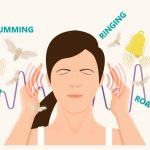Nursing Assistants Work Hard Under Hazardous Conditions
Nursing assistants make up the bulk of direct care for long term patients. It’s a huge workforce, and the work is hazardous. The largest segment of healthcare is long-term care for elderly adults with disabilities who live in private homes, assisted living communities, and institutions. Direct care occupations—home health aides, residential care aides, and nursing assistants—make up the bulk of this workforce. These aids perform some of the most important and often thankless work, which can include feeding nursing home residents, bathing them, and assisting them with other daily living tasks.
Why Is The Work Of A Nursing Assistant So Hazardous
According to workplace injury statistics from Ramsey Law Group, nursing assistants face the most hazardous occupation. Injuries and exposure to chemicals, physical assault, and pathogen exposure are common in the occupation, and the likelihood of injury is only amplified by long working hours and arduous physical demands.
As we delve into the challenges that nursing assistants face, including the types of workplace injuries that they commonly encounter and the contributing factors to these injuries, we will also explore strategies to create a safer working environment for these essential healthcare professionals.
Types of Workplace Injuries for Nursing Assistants
Physical Injuries
Physical injuries are one of the most common types of workplace injuries that nursing assistants face, and most of them are musculoskeletal injuries from strenuously lifting patients. In fact, according to the Bureau of Labor Statistics, nursing assistants suffered musculoskeletal injuries at almost triple the rate of construction workers. In addition to sprains from improper lifting techniques, nursing aides experience overexertion, fractures, and permanent musculoskeletal disorders due to the repetitive motions involved in patient care.
For nursing assistants, the risk of violence and assault from combative patients exceeds that of other healthcare workers. This also includes verbal abuse, which can lead to long-term psychological effects. NAs employed in Alzheimer care units are even more likely to experience assault injuries, including being bitten by residents. Not surprisingly, a great majority of assault cases go unreported in this field for a variety of reasons, including the lack of a serious injury, an expectation of violence to occur, a lack of time to report, or a lack of action on complaints by the administration.
Chemical Injuries
Chemical injuries are another common occupational hazard for nursing assistants, with the mere presence of chemicals in the workplace posing a risk for exposure. Studies have found antineoplastic drugs, used in chemotherapy, in the urine of healthcare workers including pharmacists, pharmacy technicians, and even family members caring for patients. Busy NAs are particularly vulnerable to exposure during their long 12-hour shifts. Despite following proper protocols and techniques, the chaotic environment can lead to untrained nursing assistants applying chemicals to patients in a pinch. Without protective gear, these informal protocols increase the risk of exposure.
NAs are exposed to several other chemicals in the healthcare environment, including formaldehyde, which is used for the preservation of pathology specimens. Ethylene oxide, glutaraldehyde, and peracetic acid are commonly used for sterilization in healthcare settings, presenting a long-term risk for healthcare workers in charge of cleaning these facilities.
Biohazard Injuries
Exposure to potentially infectious agents is one of the most frequently occurring hazards for home care aides. Many healthcare professionals are susceptible to airborne diseases, blood-borne pathogens, and bodily fluids from patients.
Nursing assistants can contract a wide range of illnesses through fluid contact alone, including the common cold, cytomegalovirus, herpes simplex virus, mumps, tuberculosis, whooping cough, and others. Some of these illnesses are of particular concern since most nursing aides are women of childbearing age who are concerned about potential pregnancy complications.
While personal protective equipment (PPE) should mediate biohazard injury risk, the extent to which nursing aides are trained to use PPE is unknown. Furthermore, the available time, workload, urgency of patient need, and the general behaviors of fellow NAs are often influential in the decision to ignore PPE in certain situations.
The COVID-19 outbreak is a relevant example of nursing aides being subject to poor biohazard protection. The Americas have had the highest number of healthcare worker deaths from COVID-19 in the world, according to the Pan American Health Organization. Nursing aides, at the time, were forced to either reuse masks and gowns or ignore PPE altogether.
Employment Factors Contributing to Nursing Assistant Injuries
Long Working Hours for Little Pay
There are several factors that contribute to the amount and variety of nursing aide injuries. One of the primary factors is long working hours and a lack of rest breaks. Nursing aides often work mandatory overtime, usually totaling 12 hours, without adequate rest. Exhausted NAs are significantly more likely to perform inadequate patient care and increase the risk of injury for everyone involved.
This is on top of the economic stress that comes with employment. It’s clear that wages in these ground-level segments of healthcare leave many workers on the poverty line. Despite working in such an important field, Nursing assistants and orderlies only earn a median of $30,290 a year, or 14.56 per hour. Many nursing aids report worrying about family and finances while at work, with over a third of NAs relying on some form of public assistance.
This wage disparity also signifies that even if overtime is optional, NAs are still heavily incentivized to earn the extra income.
A Shortage of Nursing Assistants
The shortage of NAs is a growing concern in many parts of the world, especially in the United States. There are several reasons why the demand for certified nursing assistants (CNAs) has increased.
Firstly, the aging baby boomer population has resulted in a higher demand for long-term care services. As a result, more CNAs are needed to work in nursing homes, assisted living facilities, and home health care. However, the low wages and demanding work that CNAs are subject to are a significant deterrent for those considering a healthcare career. The intensity of work has resulted in many new CNAs leaving the field within a few years of starting.
Furthermore, the lack of training programs for CNAs in some areas has made it difficult to fill open positions. Insufficient training or experience was a large contributing factor to COVID deaths for healthcare workers. In the face of emergency, many nursing aides were redirected to the COVID-19 response without sufficient training to protect themselves as they were treating infected nursing home patients. These types of haphazard shifts, coupled with the perceived difficulty of nursing aide training programs, has deterred upcoming professionals from pursuing CNA careers.
Nursing homes were chronically understaffed and underfunded even before the pandemic. Many homes were a product of 1960s government funding. Now, due to a lack of funding and the condition of these aging facilities, some nursing homes are having to close their doors. This same lack of funding is also hindering any new facilities from being built. Most nursing homes today are privately owned and financially supported by their residents.
How to Create a Safer Workplace for Nursing Assistants
Widening Education and Training Accessibility for CNAs
An ideal injury prevention method involves ensuring NAs are certified with proper education and training. However, in addition to the nursing aide shortage, there is also a shortage of college and university nurse educators. This is partial because nurses holding the master’s or doctoral degrees required to teach are almost always able to earn more money through other high-demand fields.
Post-educative training is also important. A key part of this is proper training in lifting and transfer techniques, which can help prevent musculoskeletal injuries. This training should also address the safe handling and disposal of chemicals, as well as proper PPE usage to prevent biohazard injuries.
Training should also include education on workplace violence and strategies for prevention and de-escalation. This preventative education can help nursing assistants identify warning signs for aggressive patients and colleagues as well as develop a plan of action to ensure their safety.
Continuing to Implement Telehealth Support
Pandemic-era telehealth solutions have focused on enhancing patient access while lowering biohazard risk. Continuing to scale virtual care infrastructure has the potential to make nursing assistants work less physically taxing and safer.
Propelling an era of virtual nursing can also help alleviate staffing shortages and provide options for seasoned nurses looking for a less physical career change. Despite being virtual, nursing assistants can still perform essential tasks such as educating patients and staff, monitoring patient safety in real time, and facilitating admission and discharge activities.
Enabling Representatives for Federal Healthcare Policy
To further address foundational causes of nursing assistant injuries—an occupational shortage and the currently bottlenecked healthcare education system—federal policymakers need to create sustainable and long-term solutions.
Congress needs to establish a permanent body that is responsible for monitoring the state of the nursing assistant workforce and providing advice on healthcare policy solutions. This specialized body should be equipped to address nursing pipeline and education issues, as well as matters concerning workplace conditions.
The quickest path to this governing body involves reviving the National Health Care Workforce Commission, which was initially authorized by the Affordable Care Act in 2010. Despite the appointment of members in the same year, Congress has yet to provide funding to enable the commission to become operational.
Looking Toward Solutions
This article highlights the pressing issue of nursing assistant safety and the need for nursing aide employers to prioritize the prevention of biohazard, physical, and chemical injuries. Implementing inclusive education, advancing frontier accessibility, and creating decisive workforce representation can minimize the risks of nursing aide injury and benefit the public health sector.
More Articles To Read About Healthcare
5 Tips for Optimum Senior Healthcare
7 Ways To Comfort Seniors And The Elderly
Does Medicare Plan G Cover Emergency Room Visits
Exercise Screening Could Save Your Life
6 Benefits of an Aging Population





















